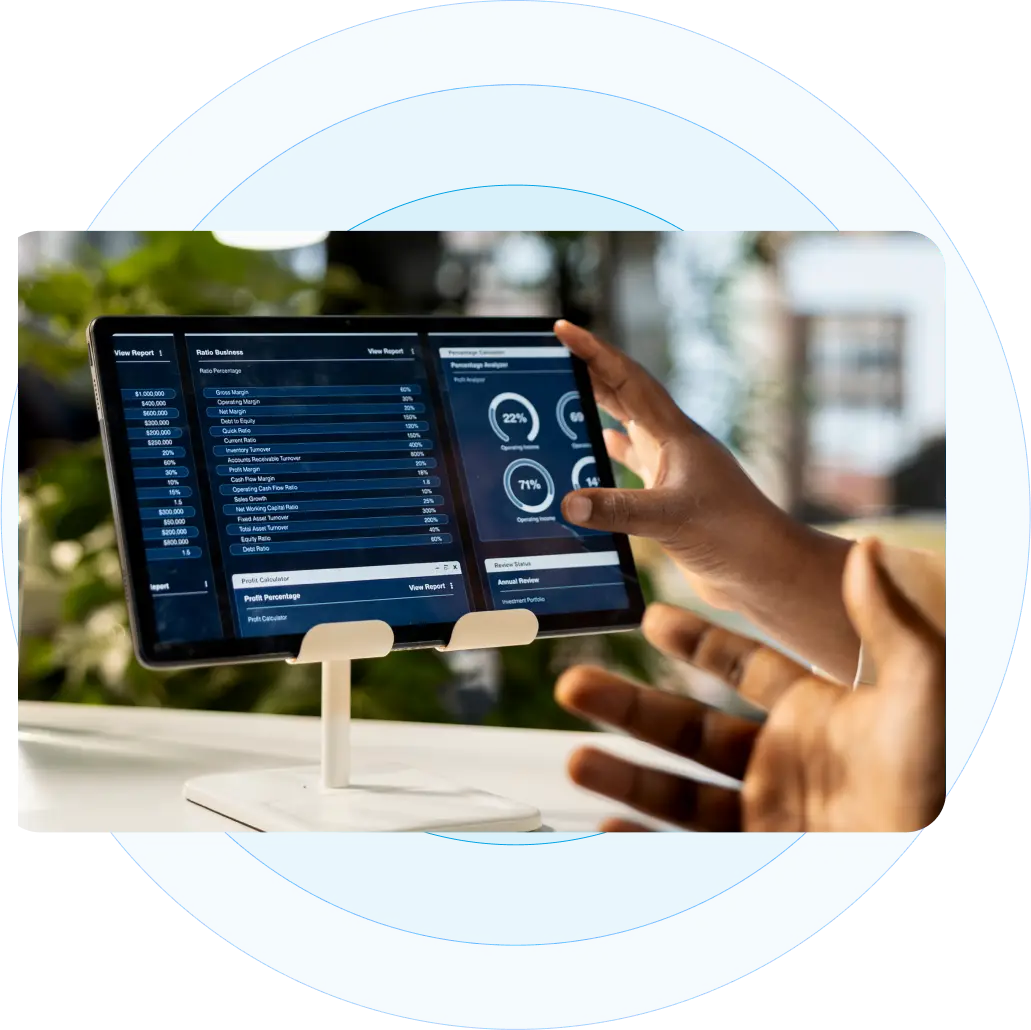CI/CD Automation to Accelerate Software Delivery

In the world of professional services, a company’s ability to deliver is a direct reflection of its internal processes. For Robert Half, a leader in talent solutions, the challenge wasn’t a lack of talent, but a lack of cohesion. Their software teams were operating in silos, building projects that didn’t communicate well with each other. This led to a system that was prone to error and downtime, directly impacting their business.


About Robert Half
Robert Half is a global leader in professional staffing and consulting services. With over 345 locations worldwide, the company helps businesses find skilled professionals in finance, technology, and other fields. Their extensive network and long-standing reputation make them a key player in the human resources industry.
For Adanto Software, this was a significant partnership, as it gave us the opportunity to apply our expertise to a complex, global business challenge.
Key Results
$600k
Annual reduction in errors & downtime through automating infrastructure management and integration testing.
$325k
Reduction in developer downtime with automated testing, error alerts, and real-time monitoring, annually.
$65k
Annual savings from reduced manual testing and deployment scripts and CI tools by 50%.
Technologies Used
Cloud & Infrastructure: AWS EC2, S3, CloudFormation, Cloudwatch, CLI, HashiCorp Packer, Chef, RabbitMQ, HA Cluster
CI/CD: Jenkins, SonarQube, Maven, Nexus
Version Control: Git, Bitbucket, SVN
Languages & Scripts: Bash scripting, PowerShell, Python, Java, NodeJS, Drupal, Angular
Other Tools: Unix, Slack
The Challenge
Robert Half’s software development teams were creating multiple projects using a mix of programming languages like Python, Java, and Angular. These projects were being built and deployed on a shared AWS cloud infrastructure and on-premise databases. However, because each team worked in a silo, there was a lack of interoperability between projects. This setup caused frequent errors and infrastructure-related issues, making it difficult to test and deploy new features.
Any misaligned changes to the shared environment could disrupt the entire system, frustrating developers and leading to severe data center outages. These outages impacted thousands of users, highlighting the urgent need for a unified, automated solution to streamline their development and deployment workflows.
Key goals
Enable Cross-Project Integration: Find a way for different projects to work together seamlessly on the same infrastructure, preventing disruptions and errors.
Automate Testing: Reduce manual effort and costs by implementing automated testing during development and deployment.
Improve Monitoring: Introduce a system that could quickly detect and alert teams about issues in the development process, allowing for faster resolution.
Streamline Deployment: Build a stable, automated platform for faster, more efficient continuous integration and deployment.
The Solution
The Road to Automation: How Adanto Software Helped Robert Half Streamline DevOps
Introduction
For a company with multiple software teams working on different projects, managing a shared cloud infrastructure can be a major challenge. In today’s competitive landscape, efficiency is key, and any friction in the development and deployment process can lead to significant setbacks. This is the story of how Adanto Software partnered with Robert Half, a global leader in professional staffing, to solve a complex problem of software integration, ultimately accelerating their delivery cycles and saving them millions.
At a Glance
Client: Robert Half
Challenge: Managing multiple siloed software projects on a shared infrastructure, leading to frequent errors, downtime, and developer inefficiency.
Solution: Adanto’s Cross-Project Cloud Integration Platform (CP-CIP) for CI/CD automation.
Outcome: Over $1 million in annual savings from reduced downtime and improved developer efficiency, and a unified platform for continuous integration and deployment.
About Robert Half
Robert Half is a global professional services firm specializing in talent solutions. They provide staffing services and business consulting to a wide range of industries. With a large and distributed technical team, the company builds and maintains numerous software applications to support its global operations. Their need for a stable and efficient development environment is crucial to supporting their business and serving thousands of users.
The Challenge
Robert Half’s software development teams were creating multiple projects using a mix of programming languages like Python, Java, and Angular. These projects were being built and deployed on a shared AWS cloud infrastructure and on-premise databases. However, because each team worked in a silo, there was a lack of interoperability between projects. This setup caused frequent errors and infrastructure-related issues, making it difficult to test and deploy new features.
Any misaligned changes to the shared environment could disrupt the entire system, frustrating developers and leading to severe data center outages. These outages impacted thousands of users, highlighting the urgent need for a unified, automated solution to streamline their development and deployment workflows.
Key Goals
Enable Cross-Project Integration: We needed to find a way for different projects to work together seamlessly on the same infrastructure, preventing disruptions and errors.
Automate Testing: The goal was to reduce manual effort and costs by implementing automated testing during development and deployment.
Improve Monitoring: We wanted to introduce a system that could quickly detect and alert teams about issues in the development process, allowing for faster resolution.
Streamline Deployment: The teams needed a stable, automated platform for continuous integration and deployment to make releases faster and more efficient.
The Solution
To address these issues, Adanto Software implemented a Cross-Project Cloud Integration Platform (CP-CIP). This solution introduced automation, monitoring, and integration tools to streamline development, reduce errors, and ensure seamless collaboration across all projects.
Automated Infrastructure: We used scripts to automate the creation of project-specific environments. This ensured consistency across all projects and eliminated manual setup errors.
Integration Testing: We implemented automated cross-project tests. These tests ensured compatibility during development and were retrofitted for production to prevent conflicts before they happened.
Continuous Integration: A CI platform, powered by Jenkins and SonarQube, was set up to automate builds, testing, and deployments. This system supported frequent and reliable releases.
Monitoring and Alerts: We configured AWS CloudWatch and Slack alerts to provide real-time error detection. This meant teams could find and resolve issues faster.
Streamlined Workflows: We created trigger-based scripts that automated environment builds, deployments, and testing, which significantly reduced the need for manual work.
Unified System: We integrated 13 siloed projects into a single, unified platform. This improved visibility and reduced inefficiencies that had been slowing down the teams.
About Robert Half
Robert Half is a global leader in professional staffing and consulting services. With over 345 locations worldwide, the company helps businesses find skilled professionals in finance, technology, and other fields. Their extensive network and long-standing reputation make them a key player in the human resources industry.
For Adanto Software, this was a significant partnership, as it gave us the opportunity to apply our expertise to a complex, global business challenge.

The Challenge
Robert Half’s software development teams were creating multiple projects using a mix of programming languages like Python, Java, and Angular. These projects were being built and deployed on a shared AWS cloud infrastructure and on-premise databases. However, because each team worked in a silo, there was a lack of interoperability between projects. This setup caused frequent errors and infrastructure-related issues, making it difficult to test and deploy new features.
Any misaligned changes to the shared environment could disrupt the entire system, frustrating developers and leading to severe data center outages. These outages impacted thousands of users, highlighting the urgent need for a unified, automated solution to streamline their development and deployment workflows.
Key goals
Enable Cross-Project Integration: Find a way for different projects to work together seamlessly on the same infrastructure, preventing disruptions and errors.
Automate Testing: Reduce manual effort and costs by implementing automated testing during development and deployment.
Improve Monitoring: Introduce a system that could quickly detect and alert teams about issues in the development process, allowing for faster resolution.
Streamline Deployment: Build a stable, automated platform for faster, more efficient continuous integration and deployment.
The Solution
The Road to Automation: How Adanto Software Helped Robert Half Streamline DevOps
Introduction
For a company with multiple software teams working on different projects, managing a shared cloud infrastructure can be a major challenge. In today’s competitive landscape, efficiency is key, and any friction in the development and deployment process can lead to significant setbacks. This is the story of how Adanto Software partnered with Robert Half, a global leader in professional staffing, to solve a complex problem of software integration, ultimately accelerating their delivery cycles and saving them millions.
At a Glance
Client: Robert Half
Challenge: Managing multiple siloed software projects on a shared infrastructure, leading to frequent errors, downtime, and developer inefficiency.
Solution: Adanto’s Cross-Project Cloud Integration Platform (CP-CIP) for CI/CD automation.
Outcome: Over $1 million in annual savings from reduced downtime and improved developer efficiency, and a unified platform for continuous integration and deployment.
About Robert Half
Robert Half is a global professional services firm specializing in talent solutions. They provide staffing services and business consulting to a wide range of industries. With a large and distributed technical team, the company builds and maintains numerous software applications to support its global operations. Their need for a stable and efficient development environment is crucial to supporting their business and serving thousands of users.
The Challenge
Robert Half’s software development teams were creating multiple projects using a mix of programming languages like Python, Java, and Angular. These projects were being built and deployed on a shared AWS cloud infrastructure and on-premise databases. However, because each team worked in a silo, there was a lack of interoperability between projects. This setup caused frequent errors and infrastructure-related issues, making it difficult to test and deploy new features.
Any misaligned changes to the shared environment could disrupt the entire system, frustrating developers and leading to severe data center outages. These outages impacted thousands of users, highlighting the urgent need for a unified, automated solution to streamline their development and deployment workflows.
Key Goals
Enable Cross-Project Integration: We needed to find a way for different projects to work together seamlessly on the same infrastructure, preventing disruptions and errors.
Automate Testing: The goal was to reduce manual effort and costs by implementing automated testing during development and deployment.
Improve Monitoring: We wanted to introduce a system that could quickly detect and alert teams about issues in the development process, allowing for faster resolution.
Streamline Deployment: The teams needed a stable, automated platform for continuous integration and deployment to make releases faster and more efficient.
The Solution
To address these issues, Adanto Software implemented a Cross-Project Cloud Integration Platform (CP-CIP). This solution introduced automation, monitoring, and integration tools to streamline development, reduce errors, and ensure seamless collaboration across all projects.
Automated Infrastructure: We used scripts to automate the creation of project-specific environments. This ensured consistency across all projects and eliminated manual setup errors.
Integration Testing: We implemented automated cross-project tests. These tests ensured compatibility during development and were retrofitted for production to prevent conflicts before they happened.
Continuous Integration: A CI platform, powered by Jenkins and SonarQube, was set up to automate builds, testing, and deployments. This system supported frequent and reliable releases.
Monitoring and Alerts: We configured AWS CloudWatch and Slack alerts to provide real-time error detection. This meant teams could find and resolve issues faster.
Streamlined Workflows: We created trigger-based scripts that automated environment builds, deployments, and testing, which significantly reduced the need for manual work.
Unified System: We integrated 13 siloed projects into a single, unified platform. This improved visibility and reduced inefficiencies that had been slowing down the teams.
Key Results
$600k
Annual reduction in errors & downtime through automating infrastructure management and integration testing.
$325k
Reduction in developer downtime with automated testing, error alerts, and real-time monitoring, annually.
$65k
Annual savings from reduced manual testing and deployment scripts and CI tools by 50%.
Technologies Used
Cloud & Infrastructure: AWS EC2, S3, CloudFormation, Cloudwatch, CLI, HashiCorp Packer, Chef, RabbitMQ, HA Cluster
CI/CD: Jenkins, SonarQube, Maven, Nexus
Version Control: Git, Bitbucket, SVN
Languages & Scripts: Bash scripting, PowerShell, Python, Java, NodeJS, Drupal, Angular
Other Tools: Unix, Slack

